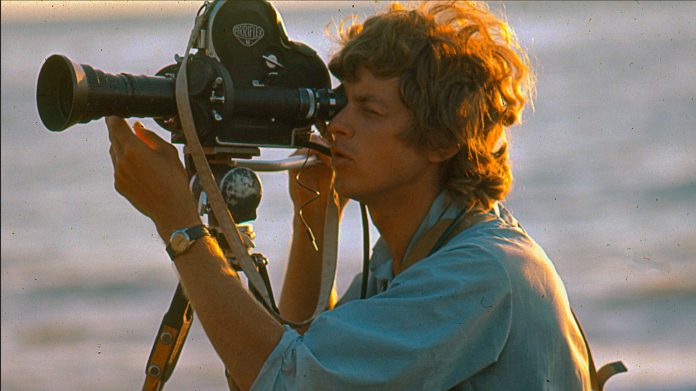Veteran filmmaker Michael Dillon AM has been honoured for his lifetime’s work, which includes more than 100 mountain and adventure film projects stretching over 50 years.
He has been awarded the Grand Prize of the International Alliance for Mountain Film – and it’s the first time it has been presented to someone from the Southern Hemisphere.
Highlights of Dillon’s career include 25 years as Sir Edmund Hillary’s filmmaker, and his filming of three significant Everest expeditions, including a never since repeated sea level to summit climb that he conceived and filmed. That film, Everest Sea to Summit, won eight grand prizes worldwide and is considered one of the greatest adventure films of all time.
Dillon, born in Sydney and now living in Woodend, began filmmaking at the age of 11 through an unconventional method.
“I used coloured pencils to create stories on long strips of paper that I wound frame by frame through a cinema I built from my meccano set,” he told the Express.
In 1969, on one of the first ever commercial treks in the Everest region, a cameraman filming it became altitude sick and Michael took over. With a real camera in his hand for the very first time in his life, he never looked back.
In 1972, Dillon made his first documentary in Nepal, the first of more than 20 filming projects he has done there since. This film, A Himalayan Journey, was sold widely to television, including to the BBC, and helped fast track global interest in Himalayan trekking.
Dillon filmed Sir Edmund Hillary’s Ocean to Sky Ganges Jetboat expedition in 1977, the start of a long association that involved six film projects with Hillary, in India, Fiji and Nepal, including the National Geographic Special Return to Everest.
“That first film we did together, From the Ocean to the Sky, won the Grand Prize at the International Mountain Film Festival in Trento Italy in 1980, and a totally new film of the same expedition that I made in 2019 won the Grand Prize at the International Mountain Film Festival in Bilboa Spain in 2020,” he said.
Apart from the many adventure films he has produced himself, Dillon also has a distinguished career as a freelance cinematographer of mostly outdoor subjects.
He received Emmy nominations for his work on the US Reality series Survivor and for the National Geographic special Those wonderful Dogs. And many of the outdoor films he has shot have won awards at International Mountain Film Festivals, including A Glorious way to Die (Grand Prize Poprad 1995, Autrans 1996) Base Climb 2, and On the Trail of Genghis Khan.
His wildlife filming credits include State of the Planet with Sir David Attenborough, and Walking with the Great Apes.
His adventure filming experience includes three Everest expeditions, two English Channel swims, two Everest ballooning expeditions, five Antarctic expeditions, many Pacific projects, a journey by London taxi from London to Sydney, the world’s highest dinner party on a mountain in Peru, three Kokoda treks, three Simpson Desert foot crossings, and ascents of the highest mountain in Africa, Europe and South America.
His cinematography awards include back to back National ACS Golden Tripod Awards for Documentary Cinematography and 2 US Emmy nominations.
In 2006, aged 60, Dillon returned to Everest reaching 7300 metres as part of a small team that included a father, his 15-year-old son, and Everest veteran Lincoln Hall, resulting in the film Miracle on Everest.
In 2004 Dillon was made a Member of the Order of Australia for his filming achievements and for his work as a founding director of the Australian Himalayan Foundation.
He is representative of a long and distinguished line of Australian accomplishments in the field of outdoor and expedition filming, dating back notably to Frank Hurley who filmed with Douglas Mawson and Ernest Shackleton.
Dillon is currently working on a new documentary about a team that sailed in 1965 from Sydney to Heard Island, and made the first ascent of Australia’s highest peak, Big Ben.








